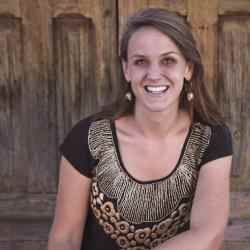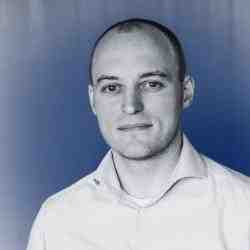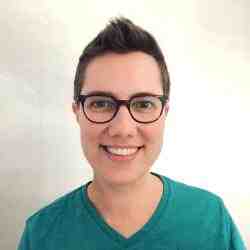Introduction
Junho is engineering information system for family with kids who have special needs by aggregating scattered health information.
The New Idea
Junho is pioneering information system for patients with disabilities and rare & incurable disease. Promisope, which Junho established in 2013, has developed the information system called ‘Careple’ (combination of Care People). Careple is aggregating records of developmental disabilities and autism from entire treatment process: symptoms, diagnosis, recommended treatment, implemented treatment, and prognosis. He collects this information from rehabilitation centers as well as individual caretakers.
Junho recognized that the type of information that caretakers are collecting are subjective opinions and rumors that circulate online, making them susceptible to poor decisions based on inaccurate information. Further, caretakers waste time and energy looking for similar cases in a flood of scattered data. To prevent irreversible choice made based on inaccurate information, Junho is developing ‘Careple’ to analyze abundant therapy cases and share organized information with both caretakers and caregivers so all are supplied with reliable information to make an informed decision. The goal is to make data-driven intelligent choices based on reliable information from the early stage of treatment planning phase.
Junho’s intervention was to rebuild information record management system for rehabilitation institutions. Evolving from a handwritten record, Junho created a new process that therapists could store data digitally through devices including smartphone, tablet PC through cloud service. In addition, the platform is designed for caretakers to be informed of the process of treatment from being counseled to a treatment plan, and implementation through rehabilitation treatment institutions so that caretakers of children with disabilities make progress cooperatively.
Junho has completed Careple model pilot test at Seoul Southern Welfare Center for the Disabled (Korea’s largest rehabilitation institution) through the partnership with Rehabilitation Institutions Association. Promisope’s business model is B2B, which is selling Careple service to public and private rehabilitation centers. The revenue model is that centers pay a monthly fee of USD 100, and it does not charge patients or caretakers. During this phase, he will reach out to public and private centers with new IT solution. Junho will leverage success cases from rehabilitation institutions to create demand from medical facilities in order to serve patients with rare/incurable and their caretakers.
The Problem
The common ground between development disability and rare/incurable diseases is that both have treatment process that will last a lifetime. Especially when patients are diagnosed with disease or disability at infant period, their parents have to make a prompt decision on operation and rehabilitation in the midst of confusion and emotional stress. In most cases, the parents give up their job to focus their child’s treatment. During this process, most of the parent search for right treatment by asking people around them or by browsing the web. Such information, since it is a subjective view of patients, is inaccurate and often an amateur’s opinion. Even if medical practitioners counsel the parents, the information does not go beyond their individual case knowledge and experience. In case of rare/incurable disease and disabilities, there have not been efforts to get big picture of treatment options despite the fact that information is scattered everywhere. Parents, out of sheer desperation, make decisions while having insufficient information. In some cases, the decision becomes an irreparable mistake. For instance, if a kid with autism is past the point where language development can be appropriately treated, he/she would miss a chance to communicate with people.
The reason why it was difficult for a service provider to solve information asymmetry was because, there has not been advanced IT system that expedites information collection, record, and sharing in rehabilitation institutions. It is assumed that 50% of nationwide rehabilitation centers is kept data in handwriting and the other 50% is recorded on an outdated software. Ministry of Health and Welfare installed the digital storage of therapy information and mandated the use of such system, however, therapists felt the problem too complicated for use. In addition, transferring data between therapy centers and parents has not been addressed. So parents of children with disabilities have been going through the burden of explaining the whole medical/treatment history each time they visit a new facility, whereupon the parents were forced to repeatedly embrace emotional trauma.
According to speedy IT technology improvement, digital healthcare market in South Korea is also growing. Innovative medical service keeps releasing such as a wearable device that measuring and recording biological signal, and big data analysis tool to combine and analyze various health data. Ministry of Trade, Industry, and Energy is also supporting a customized system based on a personal health record for the digital healthcare field. With this opportunity, Junho tries to maximize the social impact in disability and rare/incurable disease field by adopting the newest digital technology.
The Strategy
Junho launched Korea’s first information system to transform the therapy and medical fields. His core strategy is to readily store treatment information digitally, to reference, to analyze and share data, and to enable communication between caregivers and caretakers.
In 2013, Junho developed a private social networking service, similar to Facebook, for the parents of children with giant congenital melanocytic nevus and named it “FromDL” (DL is the initial for his son’s name Daniel). By probability, there supposed to be 60 patients suffering from the nevus, and 30 of them participated in FromDL. Initially the intent was to form a community to share day-to-day life moments, however, there was a need for treatment information sharing. However, this posed a risk as sharing information based on individual experience did not ensure accurate treatment selection. Junho realized that for further engagement was to be connected to treatment providers. However, he assessed that sharing medical records to patients from the beginning may be difficult due to medical regulations and hegemony of those with a vested interest. Hence he targeted rehabilitation market where people with developmentally disabilities take therapies for their lifetime. Rehabilitation involves language, integrated sensory treatment, physical therapy and rehabilitation art/music/play therapy.
Junho begins to aggregate therapy/treatment data and digitalizes it from rehabilitation institutions by equipping them with new records management system: Careple. He introduced a new process for how therapists efficiently manage records. Evolving handwritten records, therapists can store electronic data through devices including smartphone, tablet PC through cloud service. A result of the pilot test with the biggest rehabilitation center in Seoul proved that digitalized data management decreases therapists’ workload amount to one hour a day.
As Careple collects diagnosis, recommended treatment, implemented treatment and plan, prognosis as one case, it gives a bird eyes’ view to parents of kids with special needs in early treatment planning. When sufficient data is accumulated, Careple then can make a referral for appropriate treatment method and rehabilitation institutions based on data analysis. The contents will be categorized by symptoms and conditions and will be made open to the public. Patients will receive a recommendation for the most optimized treatment options based on accurate history analysis and clinical findings with a click of a button. Junho plans to utilize data analysis by Careple for developmental disability policy advice to Ministry of Health and Welfare so that government can supply more public therapy services needed.
As the record has become patient-centric, the patient and the caretaker will have an opportunity to continue treatment at home. Since the web platform is designed for caretakers, it informs of a process of treatment from being counseled to the treatment plan, and implementation through rehabilitation treatment institutions. For instance, caretakers could be counseled through Careple website.
Once Careple user number reaches the goal, Junho will re-birth ‘fromDL’ based in a dataset with insights garnered from his experience. To the parents, not only is it necessary for them to receive treatment information but also guide and support regarding how to help their children to adapt to the school and society. To remedy that, there have been formed for self-help groups. However, he found those groups are not perfect to function information sharing and community. Some parents with children with the most severe disability tend to dominate the conversation, and the sharing personal story felt uncomfortable online, where an unspecified individual can read their story. His approach pivots on empathy, further forming network. Depending on the symptoms, ages, siblings and residential areas etc, the platform will match them with those fittest for sharing common grounds through the algorithm. Junho calls this process ‘Micro Matching’.
Promisope’s business model is B2B, which is selling Careple service to rehabilitation institution, etc. Now, he is trying to make sales to welfare center through rehabilitation treatment association. He goes out to sales to a private rehabilitation center. The fee is a monthly fee of 100 dollars (premium service 200 dollars), and it does not charge patients or caretakers. From now on he is structuring profit model where he could conduct research and provide consultation to an insurance company, pharmaceutical companies, and Ministry of Health and Welfare with the information patients agreed to disclose.
The Person
Junho went to school in a district where academic competition was fierce. He entered elementary school without knowing how to write his name that was natural and fine to follow the curriculum; However, it was not ordinary in his town. He learned materials, slowly. He was not motivated until one day during his middle school years, when his teacher’s challenge, “Our country needs to be advanced nation, nation capable of things like launching satellites. How come you are dozing off during class?” struck his heart. His desire to be the first to launch Korea’s satellite made him excel in school and enabled him to enter college with major in aerospace. Unfortunately, ‘Wooribyeol 1’, Korea’s first satellite was successfully launched (1992) during his college year. Anyway, he started to work as developer at the aerospace venture company that developed ‘Wooribyeol.’ While he worked in satellite fields, he was fascinated with ambitious, almost impossible goals and pursuing himself in achieving them. He was very determined and passionate person and never gave up so finally he became a team leader in charge of overall development and succeeded in exporting the satellite abroad developed by his team. As his childhood dream was achieved, he decided to quit his work and prepare to be a professor in aerospace. As he was finalizing his last satellite project, his first son was born.
After giving birth, he and his wife encountered a problem they never did before. Their child was born with dysfunction melanin, rendering his entire body black. Without knowing the cause of it, they went to different hospitals and found out that the disease was called giant congenital melanocytic nevus. Each hospital’s recommended treatment was different and information, scarce. The surgery recommended by his family was a disastrous mistake, and there was nothing he could to alleviate his son’s suffering. It was lonely time where the couple went through without any support from the world. This was when he decided to work for children with rare diseases and their parents instead of working on satellites. He organized a group of parents with kids who have the same disease. In fact, he was only father surrounded by moms in the group. Through deep conversation with them, he found his next ambitious goal.




